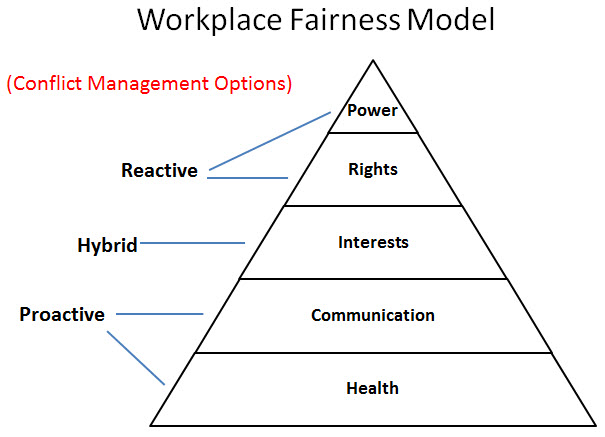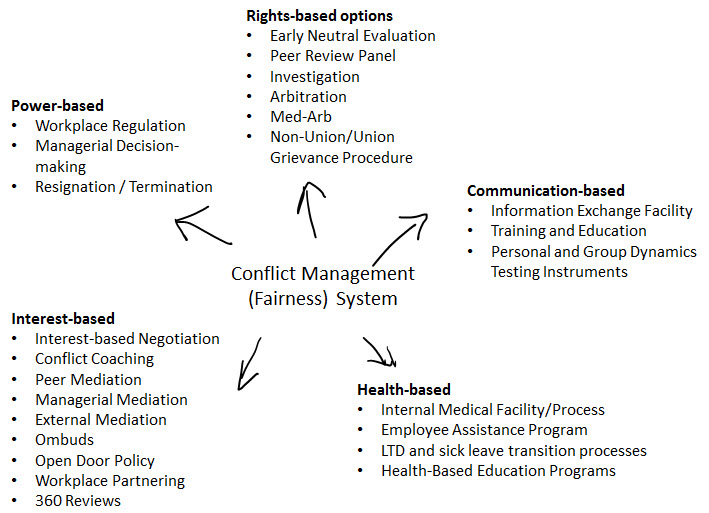All too infrequently, I get down on the floor and do a few sit-ups. I’m doing it knowing the benefits of a strong middle (i.e., core). The body functions better, is healthier, with a strong middle. I know that. You know that. What’s less obvious is that a strong middle also applies to workplace conflict management, and much more.
The Strong Middle concept
In the human body, a strong middle facilitates stability, balance and harmony between the upper and lower body parts. A strong middle makes it easier for us to hit a tennis ball, tie our shoes without sitting down, or reach for that secret container of sweets, on the top cupboard shelf.
Without a strong middle, there is disconnection. The quality of our actions suffers. Things break down.
Applying the concept of a strong middle to workplace conflict management came to me after reflecting on a couple of other middles (or lack of).
Income opportunity requires a strong middle. We benefit from a labour force with a strong middle class. The flipside is income inequality; fewer opportunities for upward mobility, distrust between people of different social statuses, and more.
Housing affordability requires a strong middle. I am fortunate to own my own house. I could not afford to buy it, today. If I were a younger me, today, I would be looking for other options; maybe microhousing, or other option in the Missing Middle.
Include a strong middle in your workplace conflict management system
In the workplace, there are many ways to potentially manage conflict. Some are reactive. Some are proactive. The middle is where reactive and proactive approaches intersect. Workplace Fairness (System) Model for managing workplace conflict:
At each level of the above model (source: Workplace Fairness Institute), there are options:
What do we miss out on when we don’t have a middle, or a poor semblance of a middle? We lose connection. Relationships take a hit. Opportunities are missed. Here’s a few examples why a “strong middle” should be a core component of your workplace conflict management system:
Example 1: Your manager is asking you to do a job that you don’t want to do. Your union rep suggests filing a grievance, through the collective agreement. You’d rather not. You’d prefer to chat directly with your manager; use a more informal approach. Grievances are a hassle. Unfortunately, neither you, the union rep, or your manager are trained in interest-based difficult conversations. Lost opportunity.
Example 2: Against your best intentions, a conflict with a business supplier has escalated into a full-blown dispute. Conflict has a way of growing. Unfortunately, your workplace manager is unfamiliar with mediation, and your company has no formal policies around the use of mediation. Lost opportunity.
Example 3: Your health benefits entitle you to 10 days sick pay. Despite that, your latest sickness bout has you filled with worry. Does my boss think I’m faking it? I’m not. Yet, your perception is that your boss gets upset talking about your health. Plus, there is no ‘open door’ policy to discuss what matters most. Lost opportunity.
Quality of relationships and interactions
Your relationship with your body, the quality of interactions between your body parts, goes through a strong middle.
Your workplace relationships, the quality of interpersonal interactions in the your workplace, goes through a strong middle.
Crunch time.
[Ben provides conflict management services for small to medium-sized businesses, nonprofits and local governments. He is an affiliate of the Workplace Fairness Institute. Contact Ben.]




Speak Your Mind